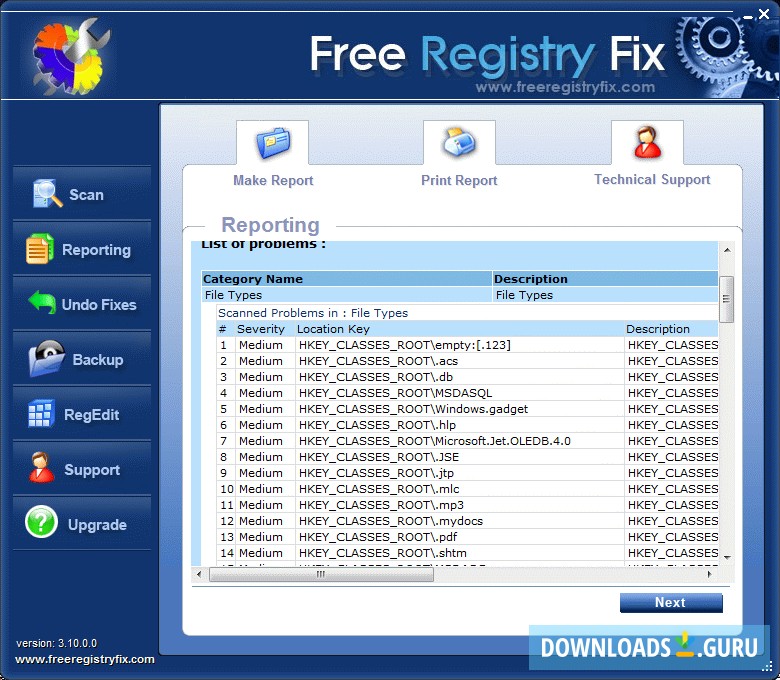

- #Registry backup scheduler how to#
- #Registry backup scheduler full#
- #Registry backup scheduler windows 10#
- #Registry backup scheduler portable#
- #Registry backup scheduler code#
#Registry backup scheduler code#
Updated controls, bug fixes and code changes. To enable automatic Registry backup in Windows 10: Open Start menu.
#Registry backup scheduler how to#
#Registry backup scheduler portable#

#Registry backup scheduler windows 10#
The track record of Windows 10 has been so poor lately that it’s surprising that MS got so overconfident that they decided that they didn’t need safeguards like this any longer.” However, today, people have plenty of free space on their hard disk. they can’t be serious about saving space.”Īnother user wrote that, “This sort of thinking might have been understandable back during the ’90’s. If they wanted to save space, even a modest improvement in managing updates would yield space saving results orders of magnitude greater than this.”Īnother user adds, “Of all the stuff crammed automatically on Windows 10 install. Restoring that backup is as simple as double-clicking on the icon and choosing to restore the information into the registry.

Users are skeptical that Microsoft has removed registry backups, for saving disk footprint space.Ī user on Hacker News comments that, “50-100MB seems like a miniscule amount of space to warrant something like this. When the program is ran with the /silent command it will backup and then close.
#Registry backup scheduler full#
However by using the Windows task scheduler you have full control of how and when the backup will run. By default the program makes the schedule set to run at user logon.

Windows will store the task information in the Scheduled Task Library, in Microsoft\Windows\Registry folder. The program uses the Windows task scheduler to backup the registry automatically.A RegIdleBackup task will be created to manage subsequent backups.After restarting the system, Windows will back up the registry to the RegBack folder.First configure a new REG_DWORD registry entry at HKLM\System\CurrentControlSet\Control\Session Manager\Configuration Manager\EnablePeriodicBackup.Windows 10 users can change the new default behavior using the following steps: Users can still create registry backups automatically by using a system restore point. Though Windows will not support registry backups by default, Microsoft has not entirely removed the feature. How to manually switch back automatic registry backups Registry backups are extremely important for users as they are the only option available, if the Windows System Restore point fails. Also it has been said that this change is “intended to help reduce the overall disk footprint size of Windows.” If browsed through the Windows\System32\config\RegBack folder, all registry hives are still present, however with each having 0kb file size. Last week, Microsoft released a support document stating Windows 10 version 1803 onwards, Windows will no longer back the system registry to the RegBack folder, by default. Around 800M Windows 10 users would have lost their data, if by any chance, the Windows System Restore point would have failed. All along these eight months, users were not notified about this change in feature by Microsoft. After eight months, Microsoft has now come back with an answer to this speculation, by stating that it was not a bug but a change in “design” that prevented the execution of registry backups. After the release of Windows 10 in October 2018, it was speculated that Windows 10 might have a bug which is preventing the successful execution of the registry backup task, usually enabled by default on PCs running the operating system.


 0 kommentar(er)
0 kommentar(er)
